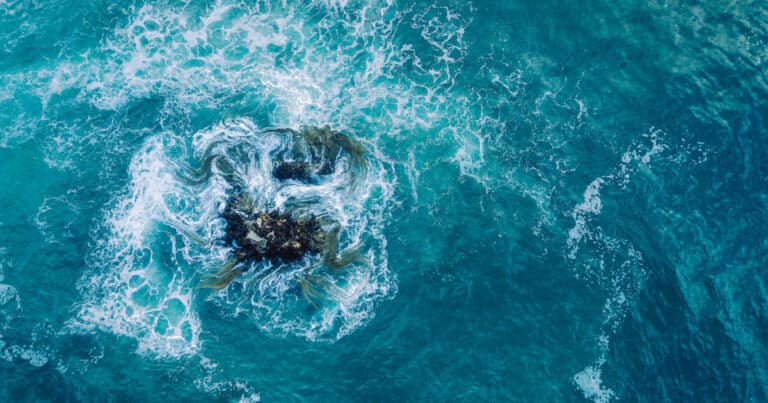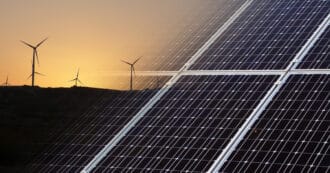By Ethel Mendius – In an era of climate crisis, there is heightened interest in new modes of renewable energy. The rise and fall of ocean tides is a largely untapped source of electricity generation, but there are drawbacks to the prospect of tidal energy.
Renewable Energy
Renewable energy is “derived from natural sources that are replenished at a higher rate than they are consumed,” in contrast to fossil fuels, which are a non-renewable resource. Not only is this type of energy sustainable, it also produces many less greenhouse gases, which “is key to addressing the climate crisis.”
Because of these benefits, renewable energy sources, such as wind and solar power, have taken off in the past few decades, and “governments, scientists, and companies everywhere have been undergoing an intensive search for new renewable energies.” Tidal power is another sustainable resource to pursue in the search for clean energy.
The History Of Tidal Energy
For over a thousand years, humans have been relying on the rise and fall of the tide for energy. In the Middle Ages, the tide was used to operate grain mills: “incoming tidewater was retained in storage ponds and the outgoing tidal movement was used to turn waterwheels.”
In the centuries before electricity was invented, these tide mills “provided as much as three hours’ worth of power each day.” After the Industrial Revolution, “the idea of using tidal power to generate electricity became a serious consideration,” which required serious investment.
In 1924, the US Federal Power Commission funded a research project on large scale tidal power plants, and in the 1950s, a similar project ran in Canada. However, neither of these government efforts resulted in significant tidal energy production because of the high operational costs.
Tidal power received more attention later in the century. In 1966, a tidal power station was constructed in La Rance, France, that still operates today. Operating with 240 megawatts of electricity generation capacity, it was the largest tidal power station in the world until 2011.
In recent decades, there has there been further investment in new techniques to harness tidal energy “as developers bring forward new and improved tidal current technologies that show promise for clearing key hurdles to commercial viability.” However, we have not yet seen tidal power implemented on a vast scale.
How Does Tidal Energy Work?
Tidal energy relies on the fluctuation of ocean tides. In turn, these tides are caused by “the gravitational pull of the moon and sun along with the rotation of the earth.”
The movement of bodies of water can be converted into power “when water passes through a constriction, causing the water to move faster.” This kinetic energy passes through tidal turbines and is stored as usable electricity.
Generating Tidal Power
Tidal power generation can be configured in several ways. The most common approaches include tidal barrages, tidal turbines, and tidal fences.
Tidal Barrages
Traditionally, tidal power is generated in a tidal barrage system. A barrage is a dam-like structure which includes a turbine at the bottom, “installed across an inlet of an ocean bay or lagoon that forms a tidal basin.”
Tidal barrages take advantage of outgoing tides to produce electricity: “At low tide, water behind the barrage is released, and the water passes through a turbine that generates electricity.”
Tidal Turbines
There are also tidal turbines, “which resemble underwater wind turbines” and are connected to a tidal energy generator to make electricity. Tidal turbines themselves are compact, but they “are often placed closely to each other to produce large amounts of energy.”
Tidal Fences
Tidal fences are a hybrid of these two methods. They “act as a single unit with multiple turbines along the vertical structure” and are placed across a channel. Tidal fence projects “directly exploit fast flowing underwater ocean currents” to create electricity.
Advantages Of Tidal Energy
We have already considered the importance of the tides as a source of clean energy. In addition, tidal energy resources boast unique advantages over solar and wind power.
For one, tidal energy generation has the potential to be much more efficient. “Because water is denser than air, tidal energy is more powerful than wind energy, producing exponentially more power” at the same speeds.
In many ways, tidal power stations are more sustainable than other clean power plants. For example, tidal energy systems are more compact and less land-intensive.
For example, the Sihwa Lake Tidal Power Station in South Korea, now the world’s largest tidal power plant, “was easily added to a 12.5km-long seawall.” In comparison, wind and solar farms can span hundreds of kilometers.
Tidal energy devices are also more long-lasting, and thus less wasteful, than other equipment. A tidal barrage can be expected to last 100 years, compared to wind turbines (20-25 years) and solar panels (40 years).
Tidal power is more consistent and predictable in terms of its energy output; the natural cycle of low and high tides are more dependable than the wind or sun.
The vast swathes of ocean at our disposal make tidal energy an appealing natural resource. While “tidal energy is best captured in areas with high tidal ranges and strong currents,” it has been tested and implemented in projects all throughout the world. The European Commission estimates that ocean energy “could meet 10% of the EU’s power demand by 2050.”
Disadvantages Of Tidal Energy
Tidal energy comes with its trade-offs. Despite the potential of tidal energy technologies, it has been a struggle to engineer projects to meet large-scale energy needs.
Tidal energy has mainly been held back by its relatively high cost: “the initial construction cost makes investing in tidal energy a particularly risky venture.” Tidal power stations can cost hundreds of millions of dollars and produce much less energy than similarly priced wind and solar farms.
The overhead cost has hampered the development of tidal energy for the past hundred years: “there has been a clear lack of progress or adoption” of tidal power technologies, and thus its potential has not been fully developed.
In addition to production costs, tidal power projects must factor in the higher cost of research and development. With so few projects in motion, it is necessary to hire environmentalists, marine biologists, and geographical experts “to conduct continuous analysis into the effect it has on the specific environment in which they are operating.”
Because of this lack of investment, we have yet to see the full impact of tidal energy on the oceans and the planet at large. However, there is reason to be wary of its environmental consequences, particularly for sea life.
Environmental Concerns
What we do know about tidal energy suggests an adverse impact on marine animals. This threat must be addressed before tidal energy technologies are rolled out more widely.
Writing for the NewScientist, Hans van Haren warns that “extracting [tidal energy] will have devastating effects on the ocean ecosystem.” This is because the bulk of tidal energy available is found in biodiverse ocean regions.
The areas with viable speeds for tidal energy “are all in extraordinarily rich and ecologically fragile straits and estuaries that are critically important spawning grounds for marine life.” Tides correlate with biodiversity for a reason: “Strong tides are what make these waters so productive: their turbulence stirs up nutrients vital for life.”
Furthermore, the turbines used for generating power “kill up to 80 per cent of fish passing through them, and changes in current affect nutrient supply, thereby altering the ecology of estuarine life.” The knock-on effect of this would have a vast impact on plant and animal life.
We have yet to see the full impact of tidal power, but it has been known to also lead to reduced water and sediment quality and changes to the shoreline and saltwater levels. These effects would impact ocean life in unseen ways.
The Future Of Tidal Energy
For the most part, we have yet to see tidal energy implemented on a large scale. It is still a cost-prohibitive venture for most investors and plays a small role in today’s global energy supply.
However, academic Ted Brekken suggests that the embrace of tidal energy is on the horizon: “‘At some point, all the easy, cheap installations for wind and solar will be done. And then it’s ocean energy that’s next in line.'”
If this is true, proponents of tidal energy must cultivate a greater understanding of its environmental impacts and mitigate its ill effects. Failing to consider the true cost of generating electricity has been a contributing factor to the climate crisis we now face.
Tidal Energy And Religion
Instead of trying to break our addiction to fossil fuels by switching to a new power source with new problems, let’s get to the root of the problem. Living more simply, using less power, we’ll find that there’s more than enough power to go around. As Gandhi said “there is enough on Earth for everybody’s need, but not enough for everybody’s greed.”
* Featured image source









